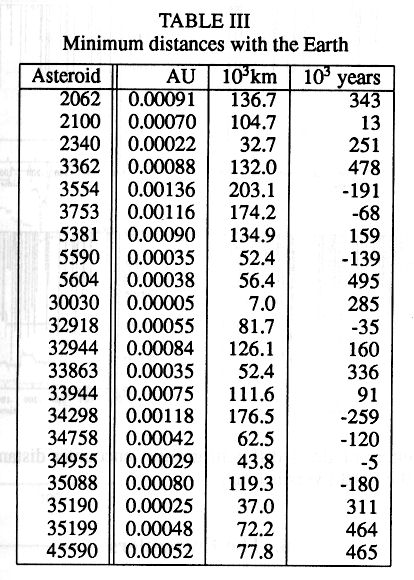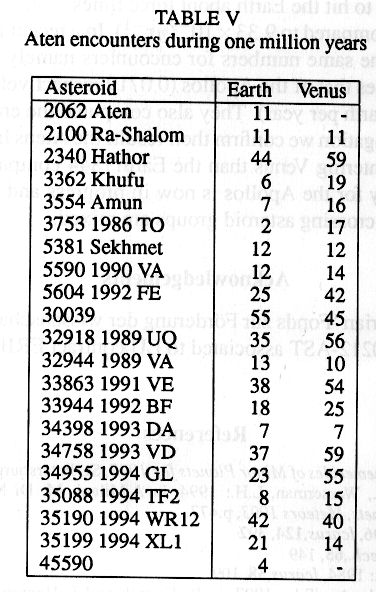
Asteroids | ||
|
The different groups of asteroids (Atens,Amors,Apollos,Trojans,TNOs) are one one of the best studied celestial bodies at the ADG in Vienna. Different research work has been done to explain the stability properties of these objects and to investigate their collision possibilities. |
||
|
|
|
| On distinguishes four different asteroidal belts in our solar system.
There are : | |
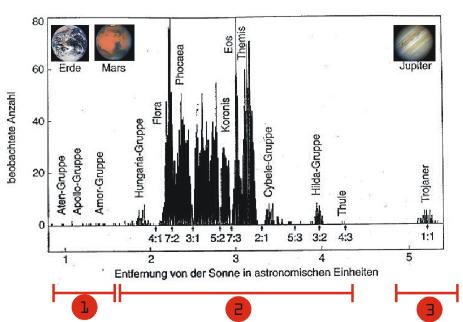
|
In the diagram above, you can see the different gaps an groups in the asteroid distribution of the main belt.Their reason are the resonances : If the orbital movement of an asteroid and an major planet shows an integer relation (i.e. if Jupiter performs 1 revolution, a trojan asteroids performs also 1 revolution - |
|
|
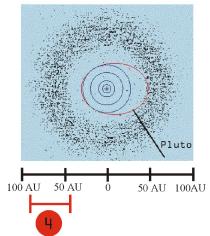
|
|
|
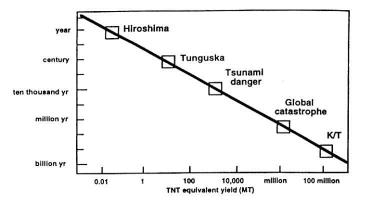 The Barringer crater in the desert of Arizona is the remanent of an object with about 300000 tons. It is one mile wide an 570 feet deep.The right pictures compares its size with the city of New York |
|
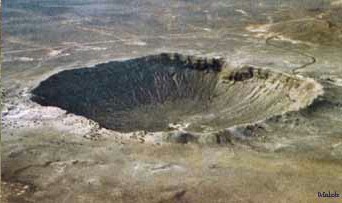
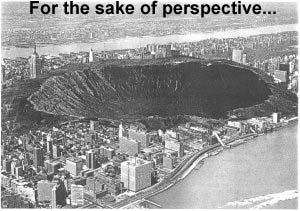
|
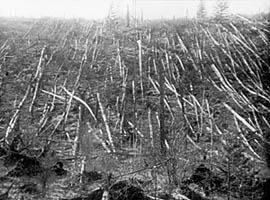
|
The "mysterious" event at Tugunska in Sibira whas the effect of a huge meteor impact, which exploded before it hit the earth, the effects of the shockwave are visible in the picture |
|
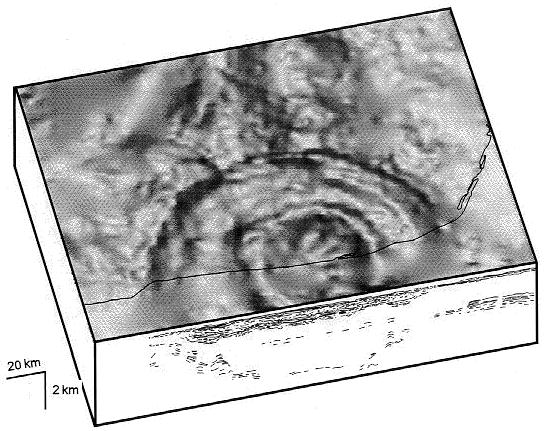
|
|
Collision with Atens ? The NEAs, the Near Earth Asteroids kann be divided in 3 different groups :
In a work of R.Dvorak and E.Pilat-Lohinger, the Aten encounters with earth and venus had
been examined. For this calculations 4 different modells were used. A 9 body system (the
whole solar system), one with 8, one with 6 bodies and one just with sun, earth,mars and
jupiter.The result of some test caculation showed, that the 6 body system (Solarsystem
without mercury, uranus, neptune and pluto) gives the best results. |
|
|
On the 3 pcitures on the right you can see, that the encounters of the ATENS with earth
and venus correlates with jumps in inclination and semimajor axis. This special asteroid
(2062 ATEN) later develops to an APOLLO. The table below shows the different encounters
with earth .The Earth encounter with the asteroid 34955, which
happens 5000 years ago, could be observerd by the ancient cultures, because the object was
bright enough to be seen. The second table shows, that their is a bigger probability for the
ATENS to hit the venus, than the earth. |
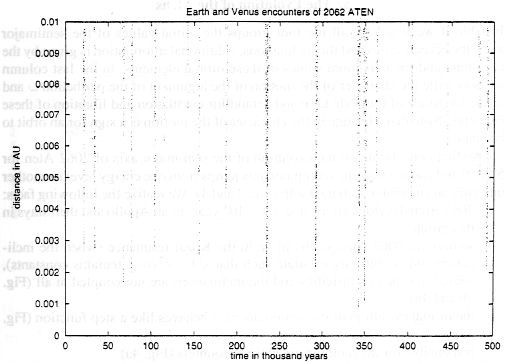 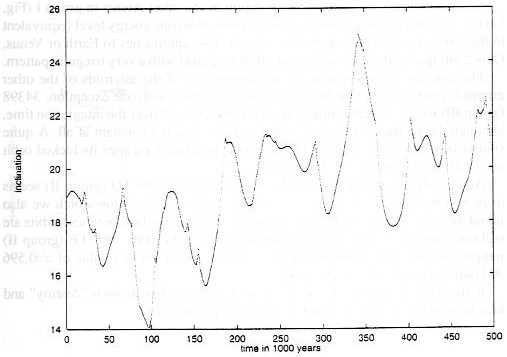 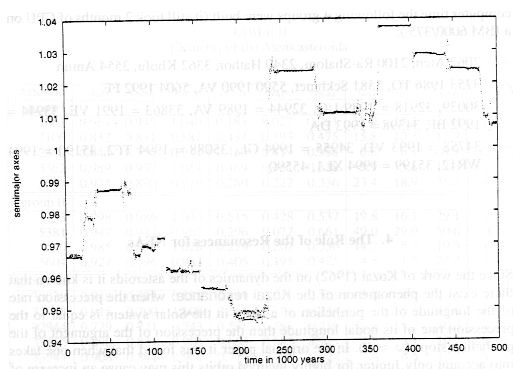 |
|
The Apollos
An other work should research the "mixing" between Atens and Apollos. Therfore, the orbital
elements of 24 Atens and 54 Apollos, were calculated numerically. The pictures on the left
show the
values of eccentricity and inclination before and after the integration over 500000 years
(squares - Apollos, circles - Atens). One can see, that 3 Apollos became Atens, and 5 Atens
became Apollos. 
|
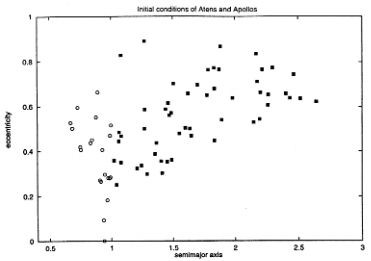 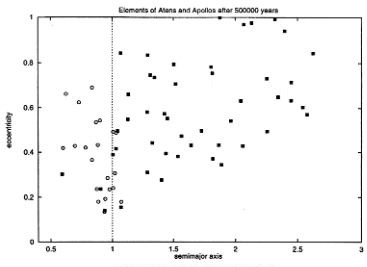
|
|
This work should explain the role of the trojan asteroids with positive Liapunovexponents, which
mean that they show a chaotic behaviour. Such asteroids are know as "asteroids in stable chaotic
motion". The table below shows the very short Liapunovtimes (the smaller, the more chaotic) of these
trojans. |
|
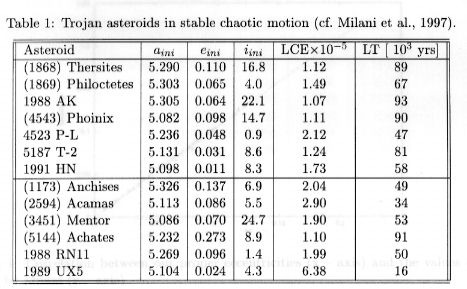 |
For the numerical integration of this objects the calculation of orbital elemenst during
100 million years, 11 intervalls were chosen, in which the evolution of the elements was observed
for 1 million years. The r.m.s of the semimajor axis, the inclination and the eccentricity was
calculated. These values were compared with the "proper elements". The pictures below (left) show the
evolution of e and i for 4 asteroids (upper picture : L4 - Phoinix and 1991 HN, lower picture :
L5 - Mentor and Achates). One can see the different behaviour which correspondends with the
different Liapunov times. |
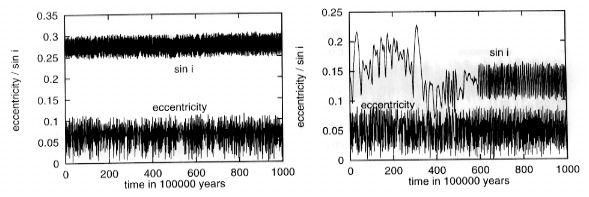 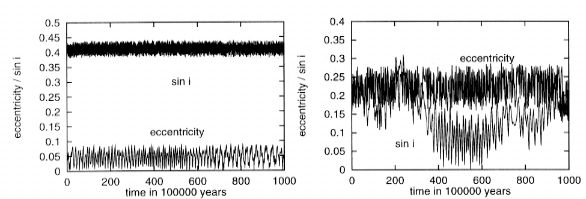
|
The last two pictures show the correlation between rms(e) an ep (eccentricity) for Mentor. This connection holds also for the other parameters, but not for ip (inclination) and rms(i), which can be seen on the lower picture. 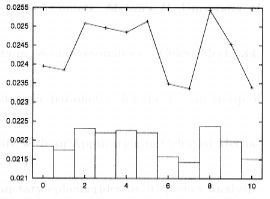
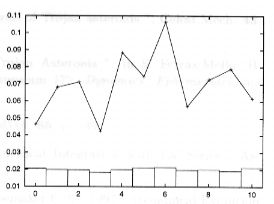
|

